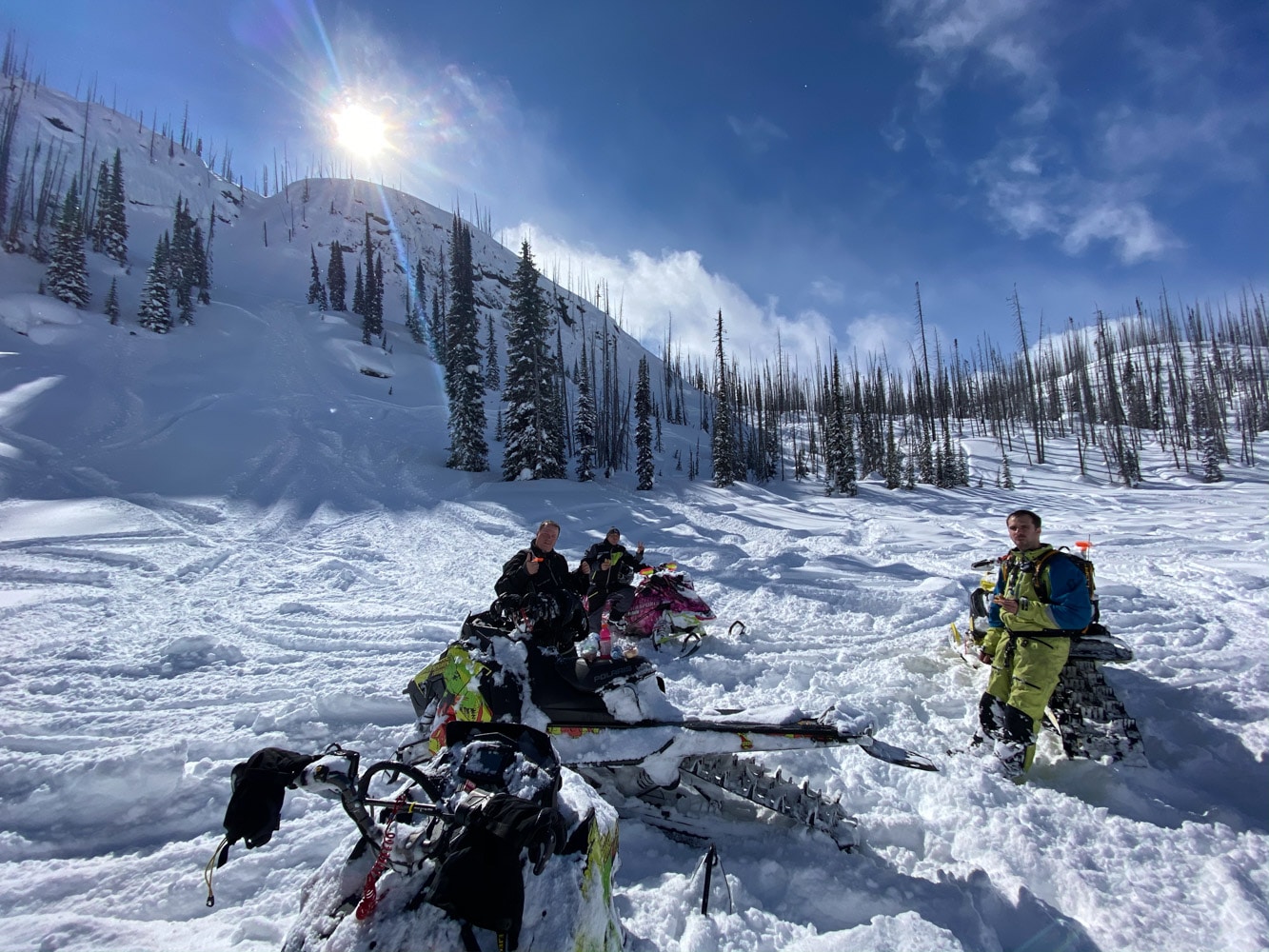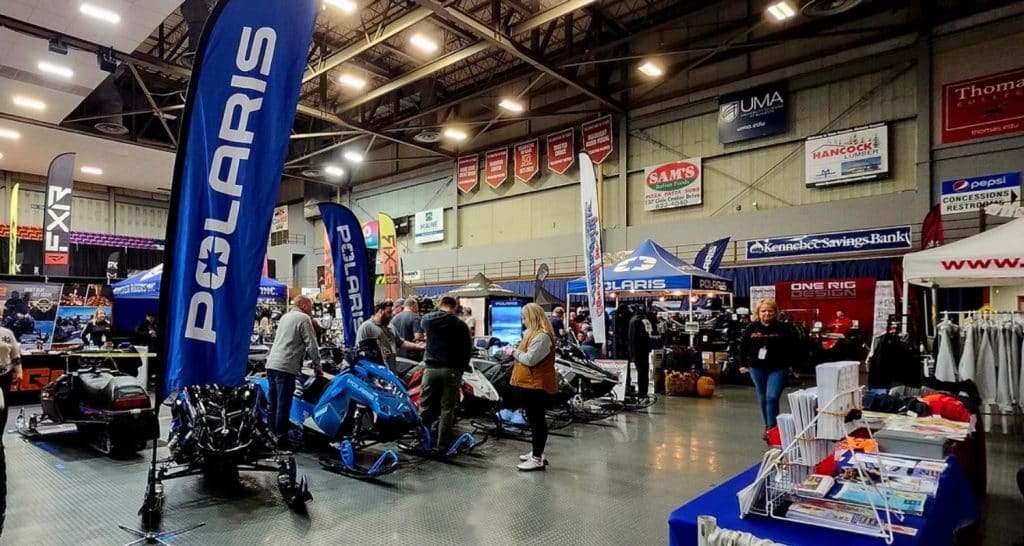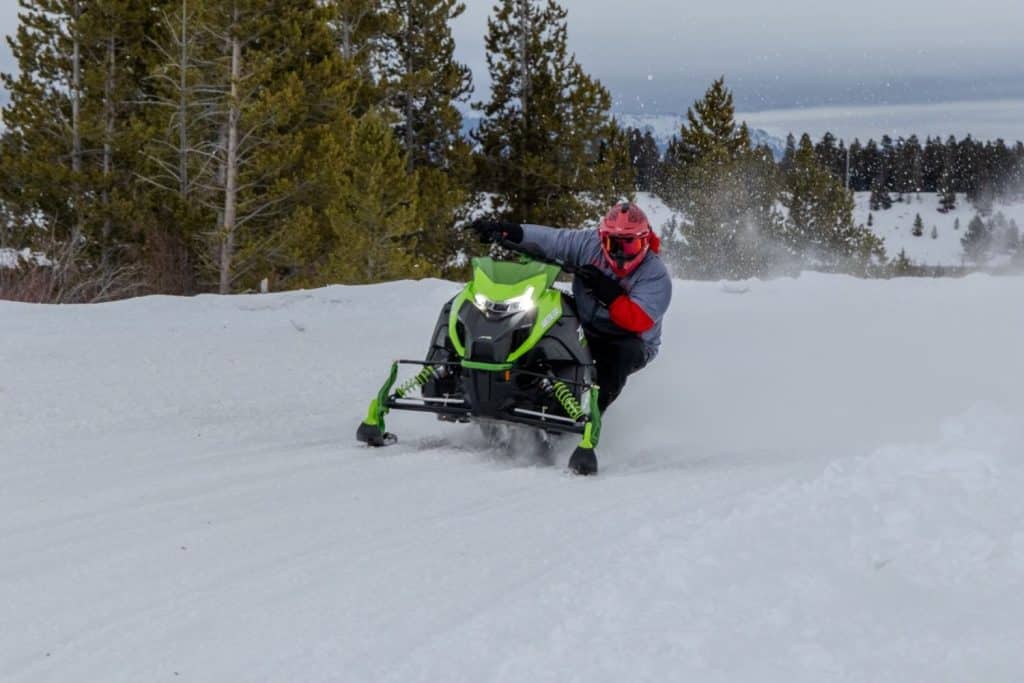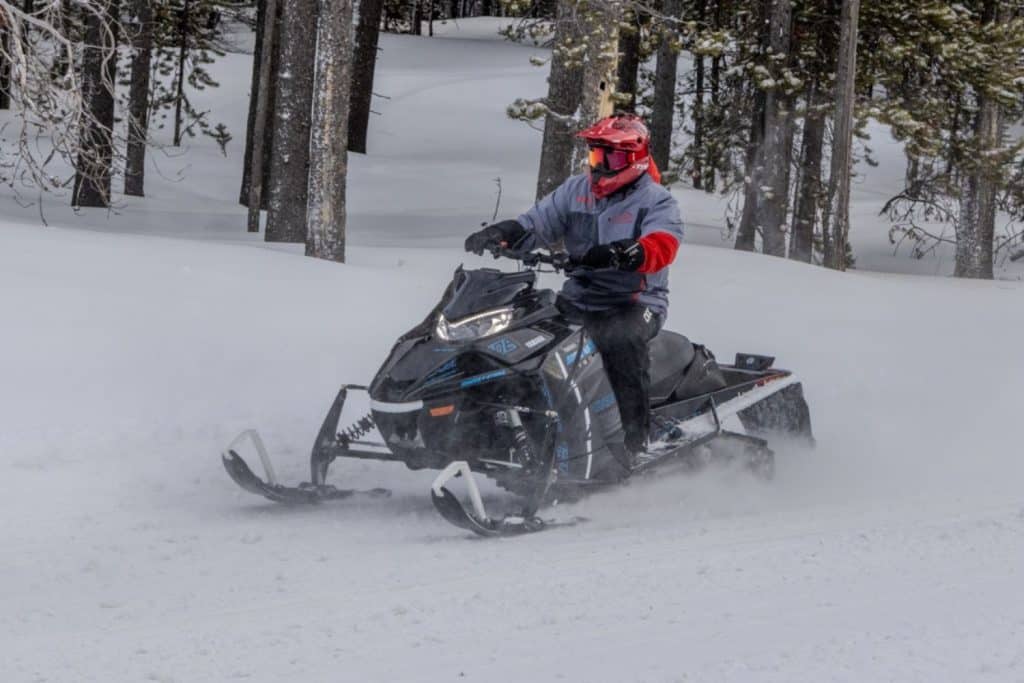The number of trail and off-trail snowmobilers claiming to be instructors or guides is sometimes impressive. But how do you know if you’ve found the right person? How can you tell the difference between a real guide or instructor and an impostor? Choosing the right guide: the basics is not easy when you don’t have the experience! In this article, I will try to answer these questions while also giving you some important basics of the sport so that you can leave with peace of mind.
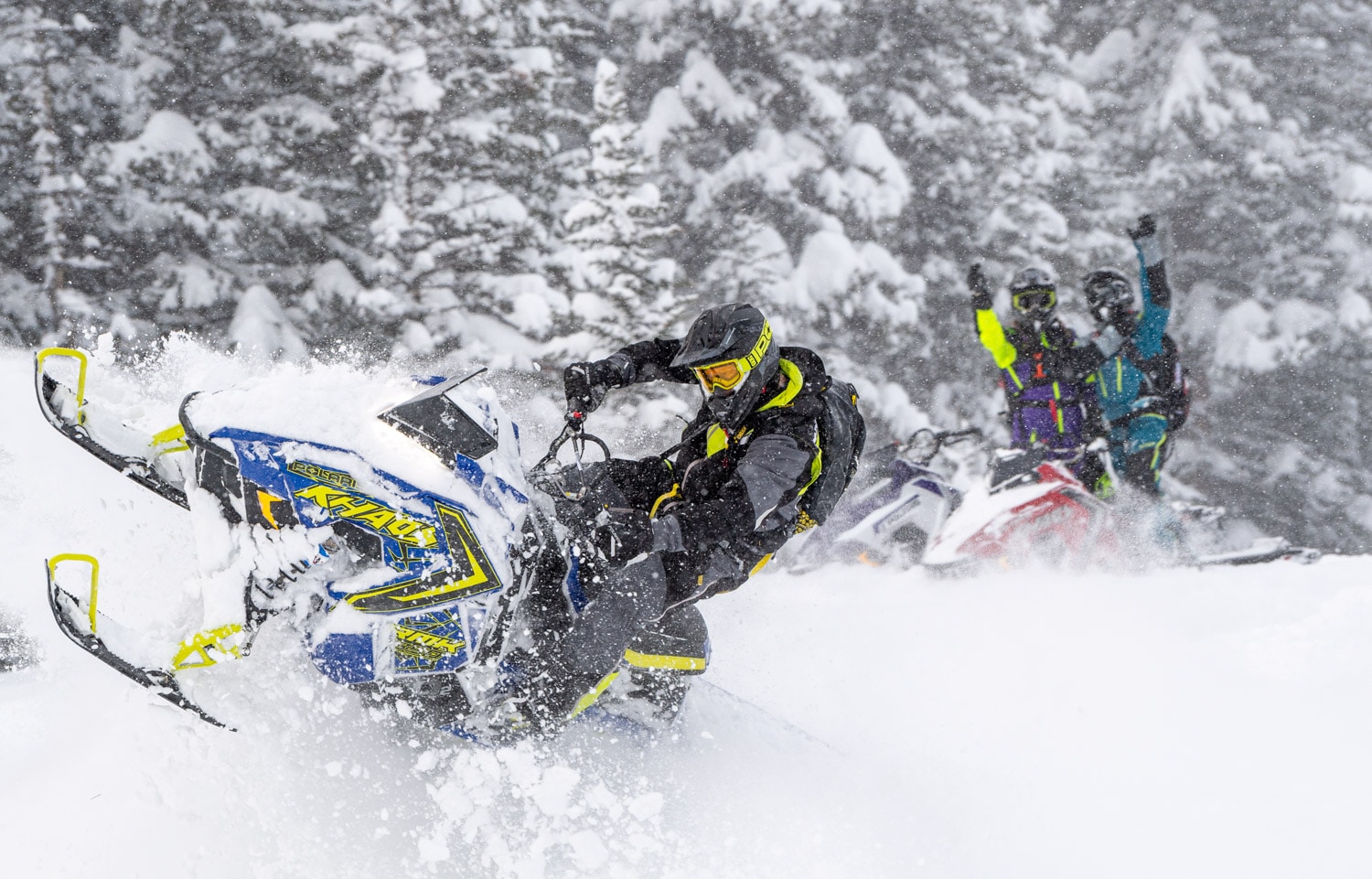
Choosing the right guide: the basics Training
For a guide or an off-piste instructor, it is essential to have the basic courses and especially to master them well:
- OHV Safety: Guide training that is mandatory as of December 31, 2021. The purpose of this training is to empower guides to take a safe approach before, during and after a trip and to give them the tools they need to ensure the safety of their clients.
- Sirius MD, Red Cross or Remote Medical: to have everything you need in case of an incident or rescue.
- Basic breakdown mechanics: to deal with unforeseen events or machine breakdowns.
A good guide / instructor
But in concrete terms, what does a good instructor/guide need to have? To begin with, obviously, he or she has the required training and MASTERY:
- He is able to guide you on the maneuvers, he knows how to advise you efficiently so that you can learn without getting tired and he knows how to adapt his teaching to your performance and your speed of learning.
He knows the area where he guides or teaches:
- He knows where to go and the safest way to get there.
- Because he knows the terrain, he will be able to spot traps and changes in terrain due to bad weather or bad conditions depending on the time of year.
- He will be able to identify your needs and requests and advise you so that you can benefit from what you really want to see and learn.
he speaks your language fluently:
- Yes… learning with someone who understands you is definitely the foundation.
It respects the basic rules of safety, including the guide/client ratio:
- According to the OHV training, he must respect a maximum number of clients VS the number of guides. These rules have been established to maximize your safety and must be followed at ALL TIMES. You want to feel safe and that your guide or trainer will be able to help you if needed without being overwhelmed by too many people to handle.
He is a pedagogue:
I’m sure you remember one of your high school teachers who was so pedagogical that he could have taught you nuclear physics without making you feel like a loser. There are those teachers who are such good popularizers that you drink in their words and their teaching naturally. These people know how to identify your strengths and weaknesses and bring out the best in you to take you to a much higher level. If there is one important point among all those listed in this article, it is this one. Going on a hike with a guide or learning from an instructor with whom you have a good chemistry, clearly contributes to your success and you should never underestimate this essential point.
Trust your instincts. Some people become instructors or guides to show off their talents, not to help you develop yours… Don’t fall into that trap. If your little inner voice doesn’t trust you, listen to it. You are not there to watch a high-flying show, but to learn and have fun in a safe way. Respect your limits and don’t be afraid to express them! A good instructor or guide will listen to your comments, concerns and questions and make sure you have a good time while respecting yourself.
Choosing the right guide: the basics – What about the snowmobile?
Now that the human factor is taken care of, let’s move on to the machine! What should you look at before you go? How can you, as a consumer, ensure that you are renting the right snowmobile?
Do your homework before you even make the final reservation to ensure that you are renting a machine that is right for your needs.
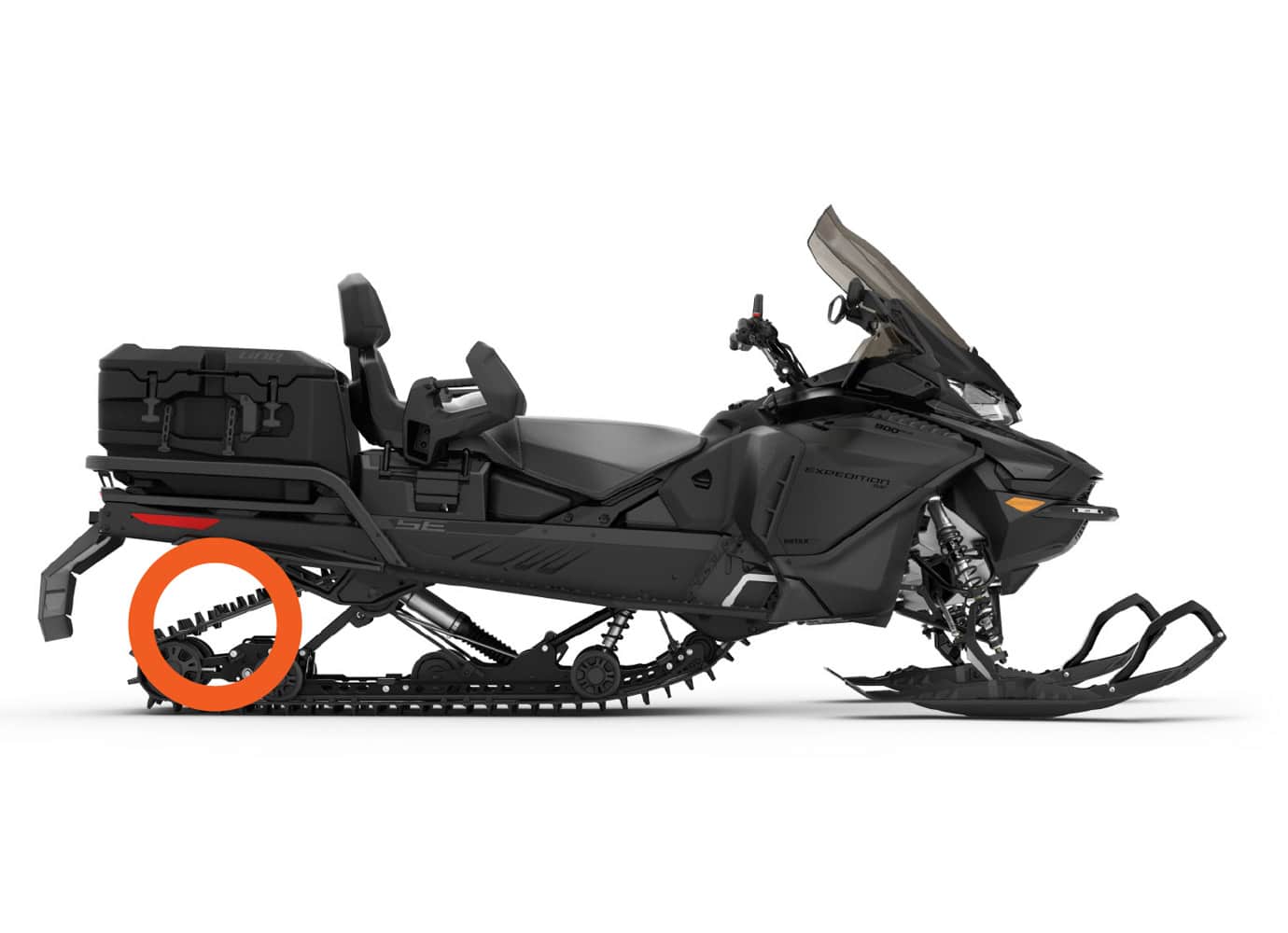
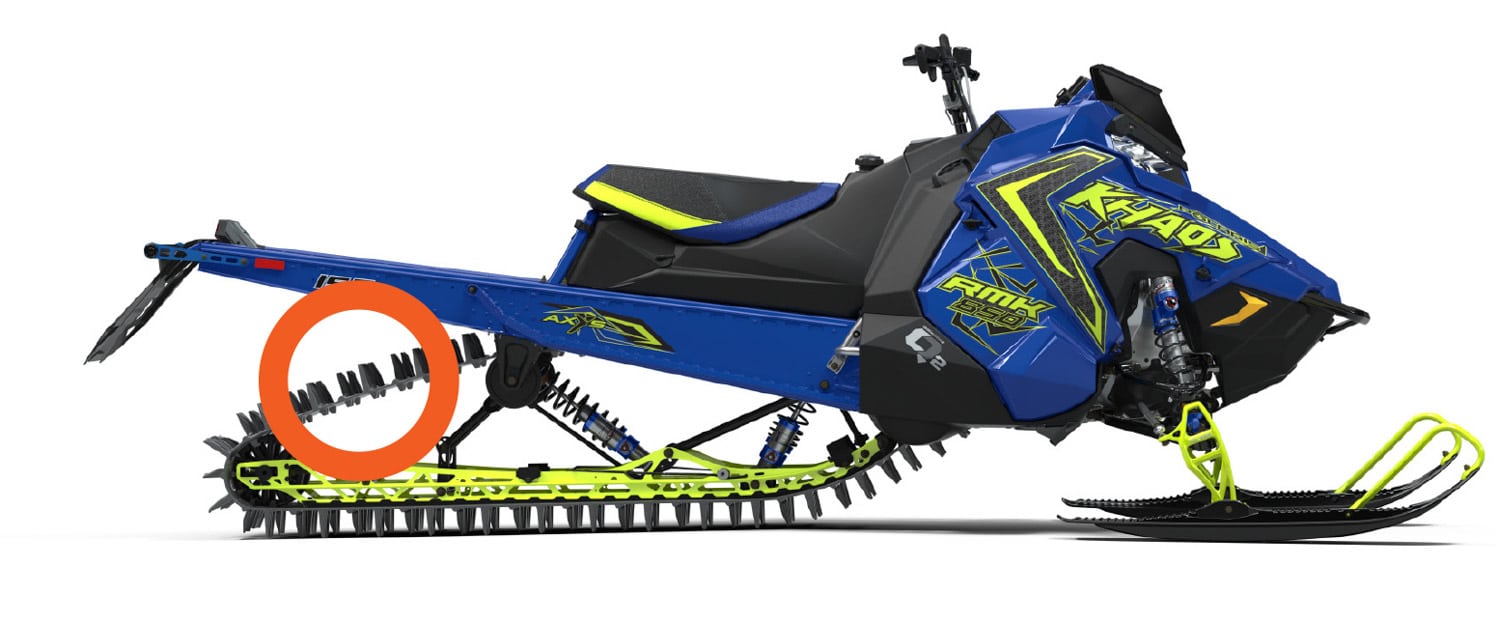
Example :
You book a day off-trail, but you are offered a model with 120 inches of track and 1.25 inch studs: NO! Normally, a hybrid snowmobile (50% trail, 50% off-trail) has a 137 to 144 inch track. A trail snowmobile has a track of 120 to 129 inches and an off-road snowmobile has a track of 144 to 175 inches with lugs varying from 1.5 inches to 3 inches. With these clues alone, you can tell if the person on the other end of the line really has the skills to properly equip you. When you make your reservation, don’t be afraid to ask in writing what kind of snowmobile you are renting: the year and the model, to make sure you have the right one once you get there.
Once the big day arrives, do your own inspection. You can even take pictures of some of the items (scratches, minor breaks, etc.). The age of the unit and the odometer are also good indicators. Generally, serious rental fleets offer machines that are less than 3 years old with less than 15,000 km. Since machines are sometimes put to the test, if they are older or have higher mileage, you are more likely to have to deal with a breakdown during your ride.
Basic equipment
A prepared snowmobiler is worth two, so before you leave, have these essentials with you:
Multi-layered underwear: if you’re going off-piste (and even on the trail), you’ll be cold on the trail to get to the snow park, but you’ll be boiling hot on your first few maneuvers in the powder. You should therefore plan to dress accordingly so that you can remove or add layers depending on how the day unfolds.
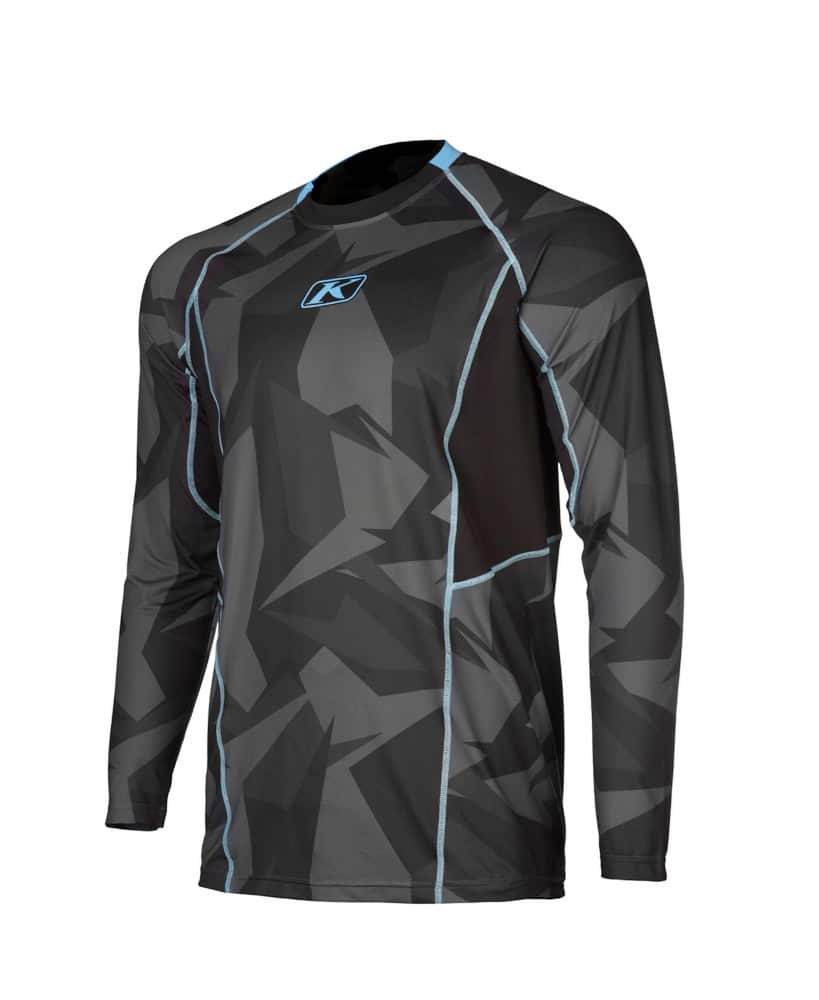
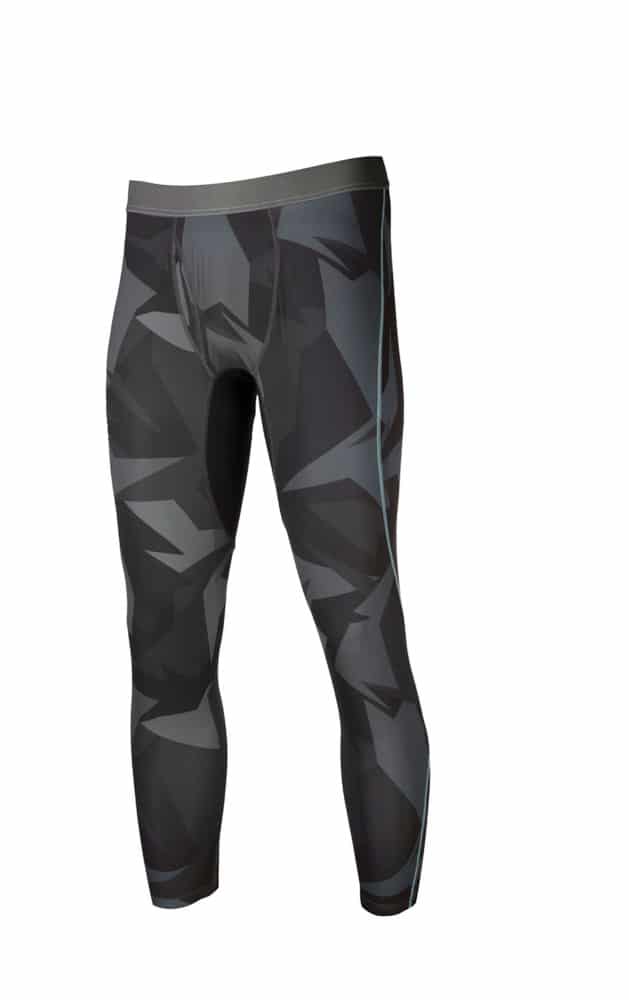
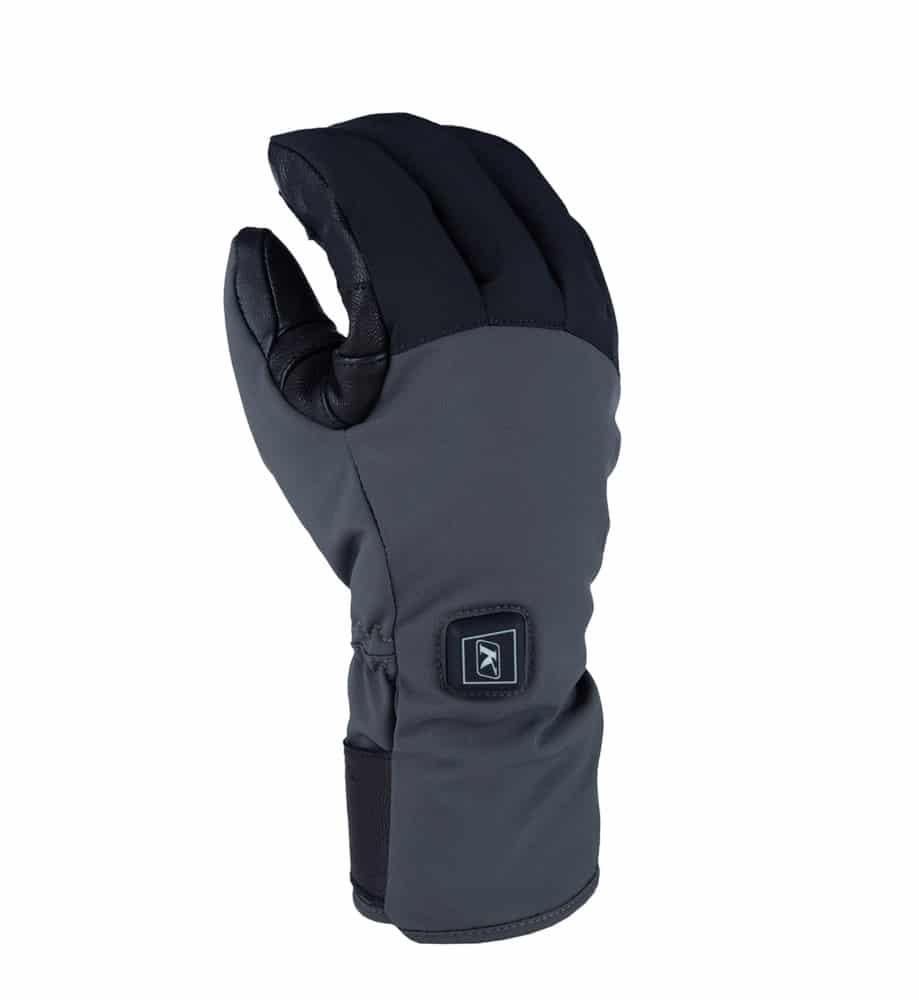
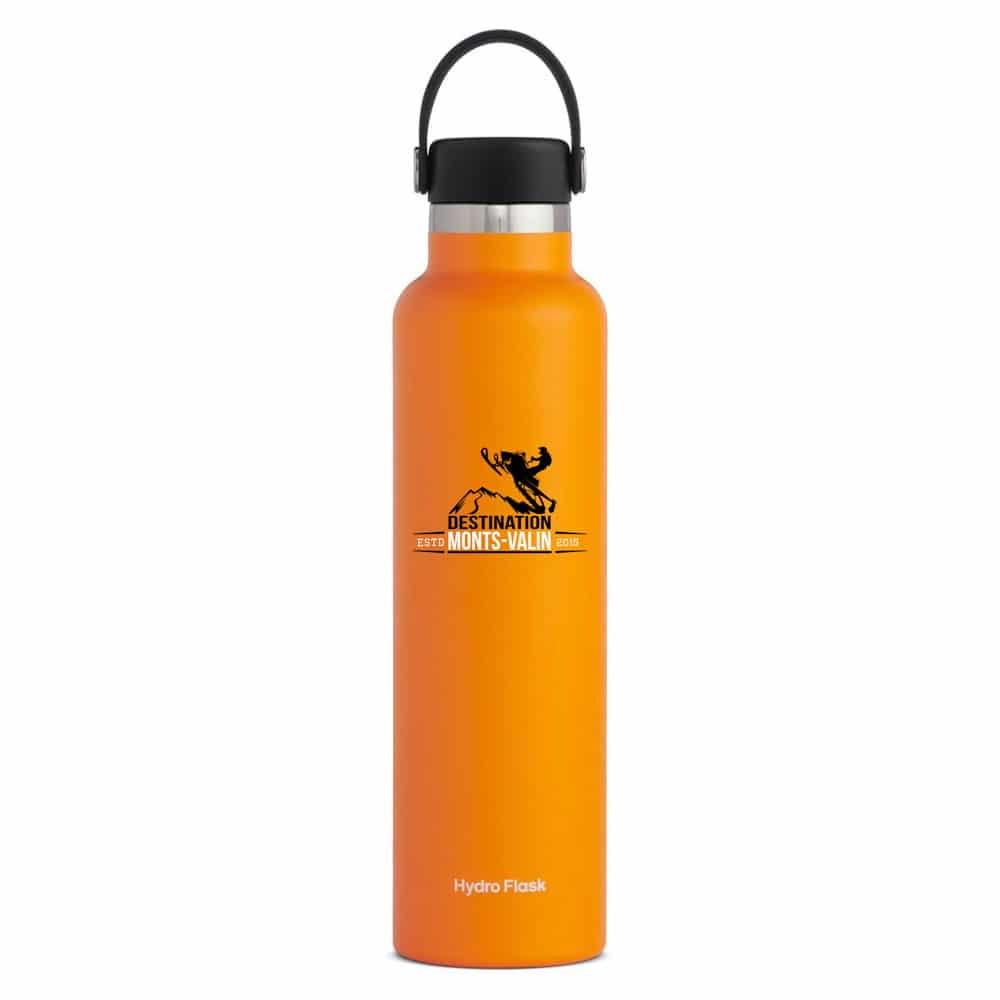
Spare gloves: when riding off-road, your gloves will get wet quickly because you will be maneuvering in the crazy snow and it will melt on your heated grips. On the trail, it is always important to have an extra pair of gloves. Keeping your hands dry is a priority.
Have water: Staying hydrated is an important part of hiking on or off the trail. Ideally, to avoid freezing, you should carry it in a waterproof and solid container like a thermos.
Despite all of this good advice, it is clear that jeans and small dress shoes are still the order of the day when newcomers come to try off-roading. Yes, some winter gear or clothing may seem effective when you’re doing your usual thing, but you have to understand that arriving in jeans and hiking boots to spend a day outside in the powder is the worst choice ever! Never underestimate Mother Nature, you never know what she has in store for you: dress up!
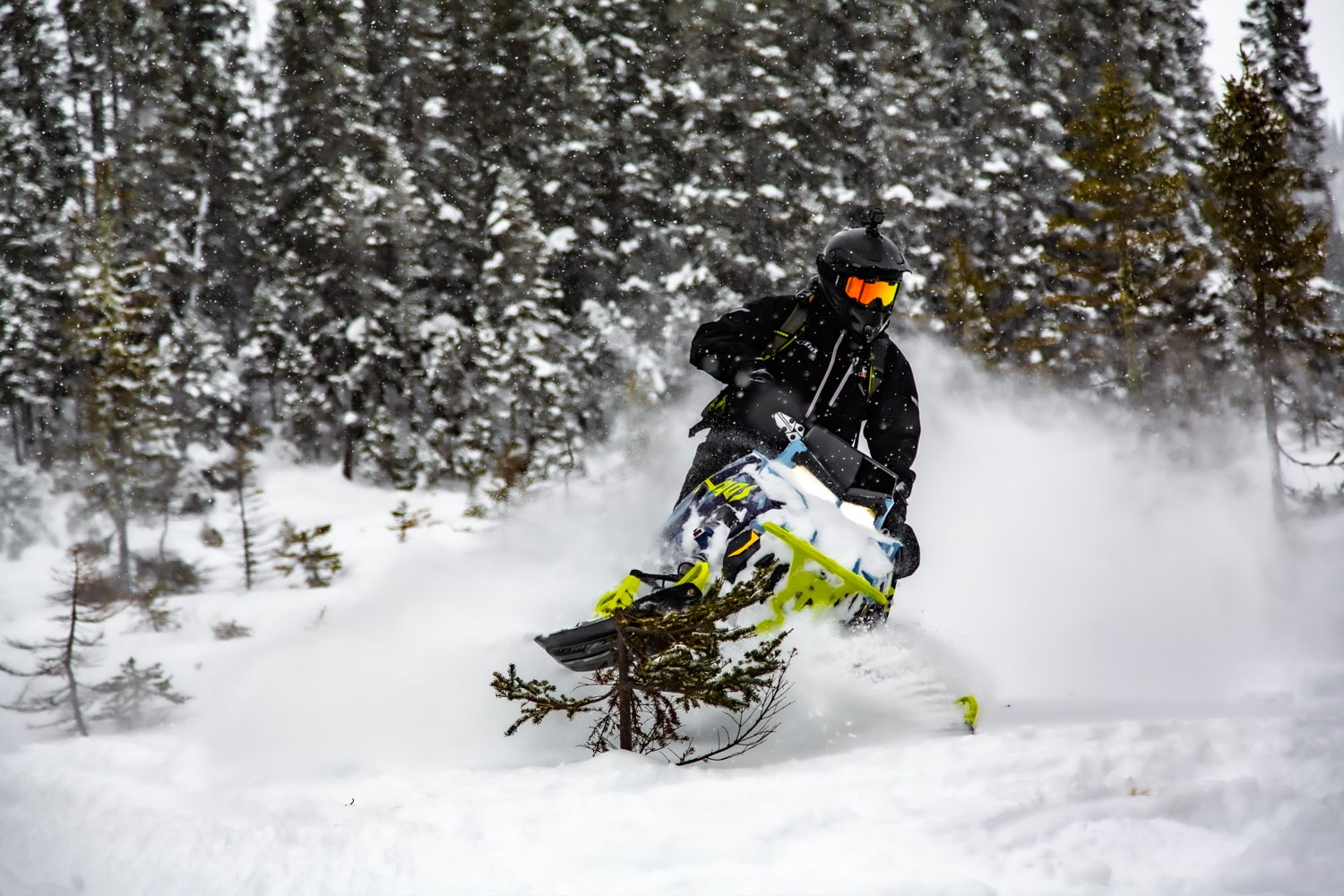
Choosing the right guide: the basics – In conclusion
Some companies sell off-piste packages and have the annoying habit of embellishing reality and not taking into account certain important facts such as physical fitness… Unfortunately, if you are significantly overweight or if your physical fitness is not good, you may not be able to perform certain maneuvers and you may even get injured. If you find walking in deep snow to be an obstacle course, it is recommended that you get in shape before engaging in this activity. Your pleasure and safety depend on it. Have a great season!

